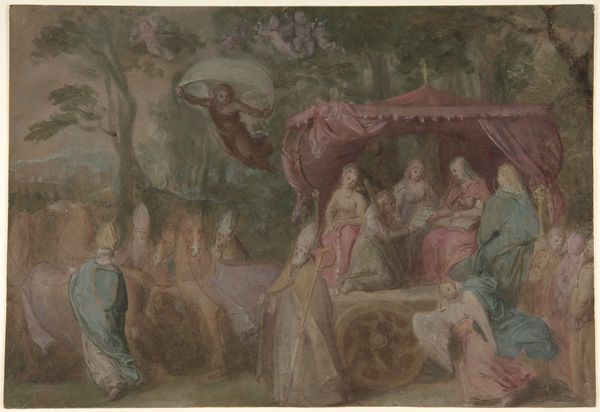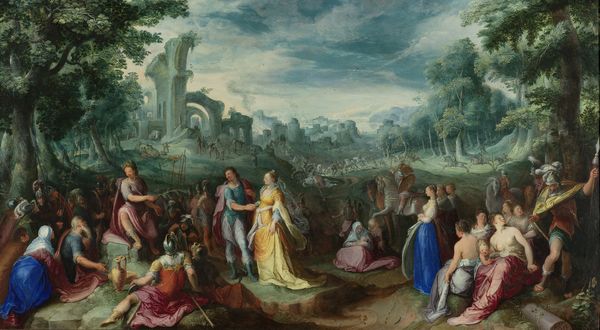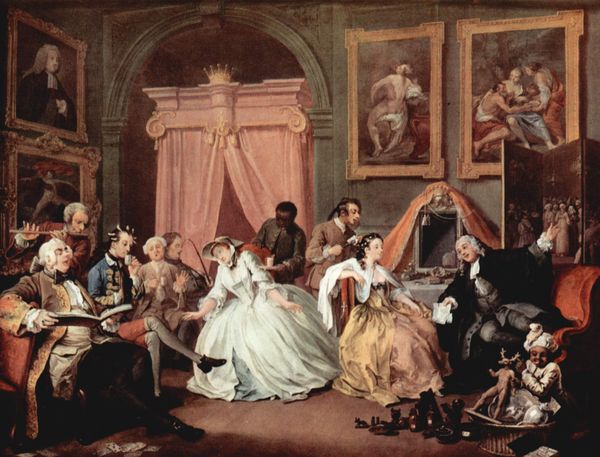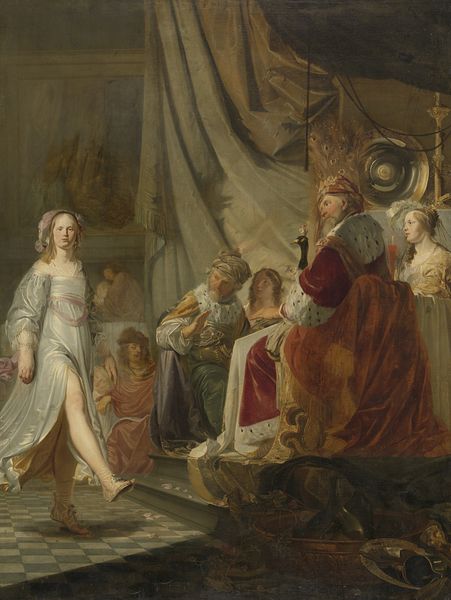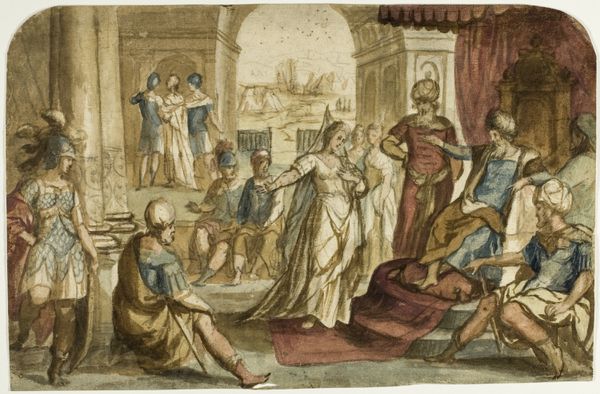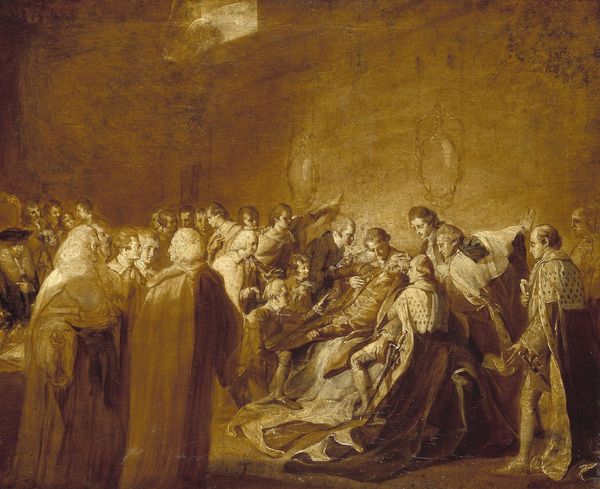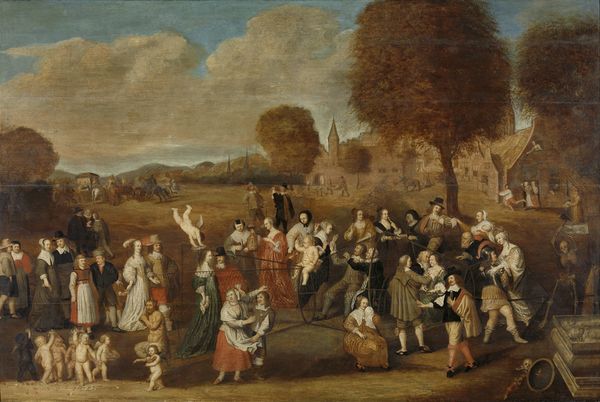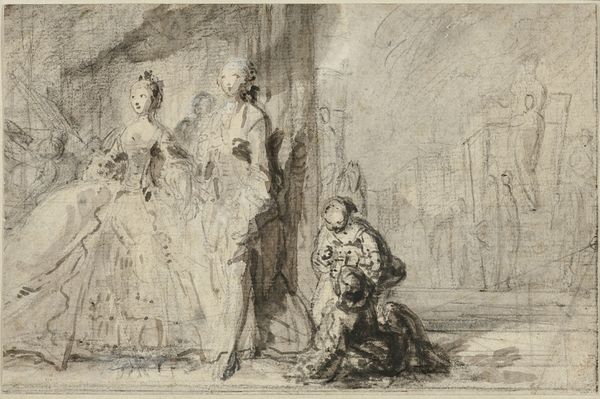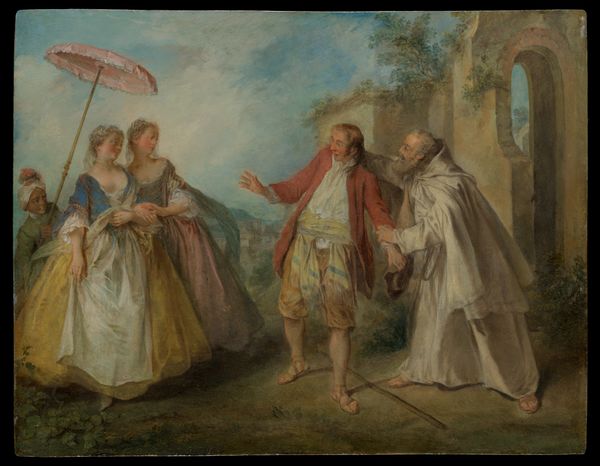
The Duke of Valois in his cradle in a lower room of the Palais-Royal, October 1773 1848
0:00
0:00
alexandreantigna
Château de Versailles, Versailles, France
Copyright: Public domain
Curator: Immediately I'm struck by this muted yet lavish palette, like browns and creams holding court, all focused around this tiny life—a baby. Editor: This is Alexandre Antigna’s "The Duke of Valois in his cradle in a lower room of the Palais-Royal, October 1773," painted much later, in 1848, now hanging at the Chateau de Versailles. Antigna's choice to depict such an intimate royal moment offers a glimpse into the societal structures surrounding birth and legacy. Curator: A birth as spectacle. A somber tableau, all those watchful faces in baroque garb, peering down as if judging the infant’s worth. Does it deliver enough value? You know, the pressure to perform starts so young, even for royalty. It all feels terribly claustrophobic, don’t you think? Editor: The confinement is palpable. Beyond the opulent costumes, the painting unveils how rituals and environments shaped identities within the royal sphere. Consider the gendering embedded in these practices – the weight of dynastic succession falling so heavily. And while it is opulent, it looks pretty bleak as a natal experience to me, honestly. Curator: The theatrical presentation, it's less about the babe and more about what he *represents*, as opposed to the sheer reality of just… being a newborn. So the baby is reduced to a mere symbol? Is that Antigna's commentary, do you think? I see it like that—a critique, perhaps unconsciously rendered? Editor: Absolutely. The very staging invites questions. Who benefits from these displays of lineage? Whose stories are amplified, and whose silenced? What are the power dynamics at play, right from the very beginning? I also think we have to consider this work through the lens of when it was made in 1848, with all that upheaval in the air. Was the artist aware of a coming storm? Curator: Well, standing here, contemplating this birth scene, I'm thinking about what truly births us? Societal expectation versus raw existence... which self survives? Which one thrives? I’d argue neither ever fully disappears. Editor: Yes, and perhaps the questions it provokes, even now, centuries removed, are its most enduring contribution to the larger narrative. It allows us to critically examine the origins and the inherited social roles that we might all unwittingly find ourselves born into, royal or not.
Comments
No comments
Be the first to comment and join the conversation on the ultimate creative platform.
